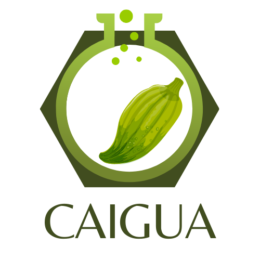MENUMENU
The caigua (Cyclanthera pedata) is a herbaceous plant belonging to the Cucurbitaceae family whose fruit is similar in appearance to a cucumber; it is an annual species native to Meso- and South America (mountainous areas of Peru and Ecuador) which was probably imported into Italy by emigrants returning from such areas and cultivated in various Alpine valleys including Valcamonica where it is known by the name of “ciuenlai” or “milione-miliun” due to its high productivity. The caigua is an annual climbing plant well suited to mountain areas (since it is an Andean species) where it can reach 4-5 meters in height if supported. It is a monoecious species that produces small yellow flowers and an elongated green fruit consisting of a white pulp and several black seeds. In Italy (just in Lombardy) the fruit is eaten raw or cooked and can be preserved pickled or in oil. In America, the shoots and young leaves are also consumed fresh as food.
Caigua is also considered a medicinal plant whose active ingredients (many of which have not yet been investigated and characterized) have different beneficial effects on human health. The fruits of this plant are widely used in the traditional medicine of the Andean populations for their anti-inflammatory activity, for their hypoglycaemic properties and for their regulating action on lipid metabolism which lowers cholesterol and triglyceride levels in the blood.
The project aims to establish whether the Lombardy caigua populations, adapted to the environmental conditions of the mountainous areas of Lombardy, are genetically different from the American ones and have agronomic, phytochemical-nutritional and medicinal characteristics similar to those of Mesoamerica. This study would provide the scientific data necessary to enroll the landraces of Lombardy caigua in the national agro-biodiversity registry (to initiate actions for the conservation of the genetic resource) and to promote the launch of new agri-food and/or herbal medicines able to increase the plant resources of Lombardy and promote the sustainable development of mountain territories.

Activity 1 – Search for material
During the first months of the project, the search for traditional local caigua varieties that have been grown in Lombardy for at least 50 years will be carried out. This activity will be performed throughout the region using UNIMONT tools and channels.
Task 2 – Genetic characterisation/comparison
Each caigua cultivar will undergo molecular analysis aimed at highlighting any genetic differences between the Lombardy and American cultivars.
Activity 3 – Preparation and management of experimental fields
The seeds of the Lombardy caigua varieties and the commercial seeds of American caigua will be used, starting from April/May 2023, for the preparation of various experimental and multiplication fields located in the Az. Agr. Il Castagneto (Piancamuno, BS).
Activity 4 – Morphological and agronomic characterization
The morphological characterization of the traditional caigua cultivars will be carried out using geometric morphometry techniques. In addition, classic agronomic analyzes will be conducted: weight of a thousand seeds, germinability of seeds, plant height, seed yield, etc.
Activity 5 – Phytochemical analysis
Phytochemical analyzes will be performed to define the phytochemical profile of the collected samples and to compare the samples originating from different parts of the plant as well as from different cultivars and experimental fields. The information obtained from these analyzes could be useful for verifying the suitability of Lombardy caigua populations for use in herbal preparations.
Activity 6 – Analysis of bioactivity
Bioactivity characterization will be performed at the Department of Biotechnology, Chemistry and Pharmacy of the University of Siena, on in vitro cellular models of endothelial dysfunction induced by high levels of glucose or high levels of vascular inflammation. This activity will allow to define the biological properties of the Lombardy caigua cultivars (food with nutraceutical potential).
Activity 7 – Dissemination of results
The “plant agrobiodiversity mapping” page of the UNIMONT Portal will be updated by adding, for each caigua cultivar identified, the description of its characteristics (morphological, agronomic, phytochemical and bioactive). A final seminar will also be organized during which the results of the project will be illustrated to all those interested in the cultivation/conservation and transformation of the caigua. At the end of the project, articles will be published in appropriate scientific journals and/or technical-dissemination journals reporting the results of the research carried out.